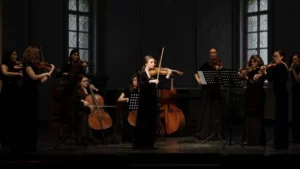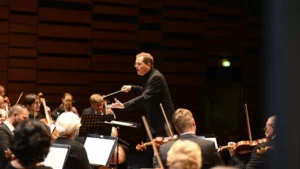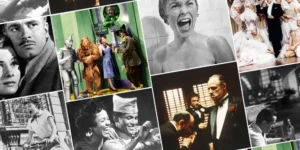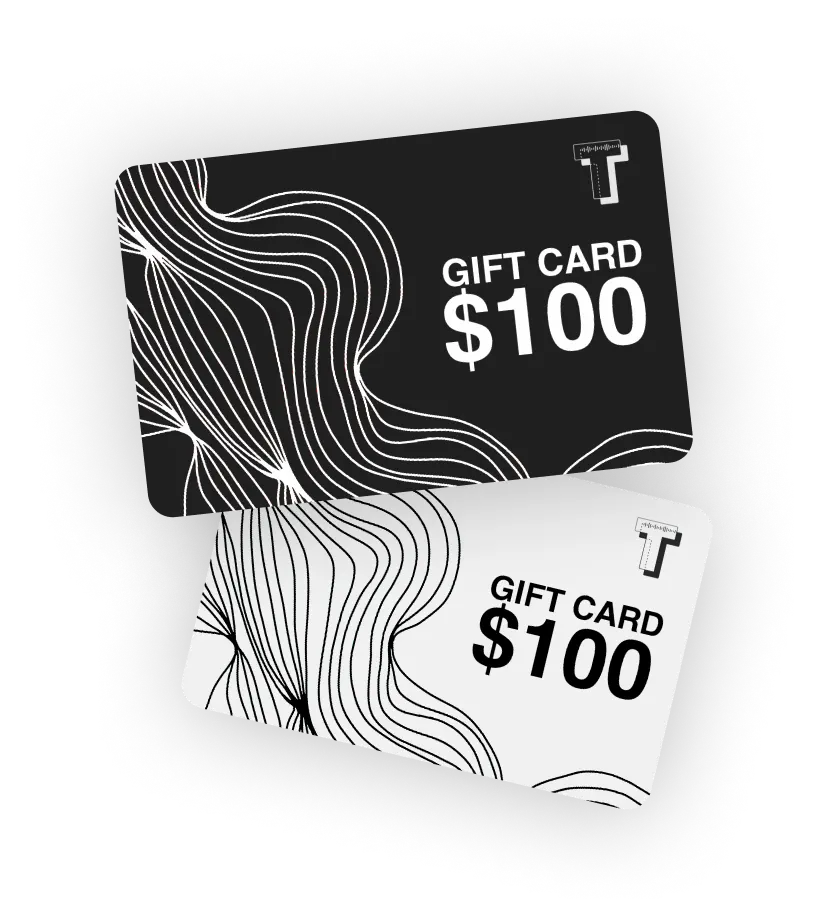Choosing the right music is not just a creative decision; it’s a pivotal one when producing a video, film, or podcast. The soundtrack that underscores your visuals, narration, or podcast dialogue wields a profound influence, shaping the mood, tone, and overall emotional resonance of your content. It’s the subtle difference between drawing your audience into the narrative and leaving them adrift, unengaged.
Music possesses an innate power to evoke a spectrum of emotions — from laughter to tears, from fear to inspiration. However, this power is harnessed only when the music is meticulously matched with the storyline and visuals. A mismatched track can inadvertently mislead the audience, while the perfect harmony amplifies the essence of your production.
Whether it’s the zest of an upbeat pop song for a vibrant YouTube video, the poignant strains of a piano for a heart-rending film scene, or the mellow notes of jazz for a podcast introduction — the choice of music should be harmonious. Every element, from sounds and melodies to instruments and tempo, should converge to craft the intended ambiance and rhythm.
In this comprehensive guide, we’ll delve into the intricacies of selecting music that aligns seamlessly with the style, pacing, mood, and target audience of your project. From synchronizing music with visuals and scenes to sourcing high-quality tracks and collaborating with seasoned composers, we’ve got you covered.
Embark on this journey to master the art of music selection, ensuring your videos, films, and podcasts resonate deeply with your audience. Let’s get started!
About TuneTailors: At TuneTailors, we understand the transformative power of music. With a team of dedicated composers, sound designers, and audio experts, we offer bespoke musical services tailored to your unique needs.
1. Evaluate Your Media Type and Goals
a. Things to consider based on whether it’s a video, film, or podcast project.
The foundation of any successful media project lies in understanding its nature and objectives. Before diving into the vast ocean of music choices, anchor yourself with a clear understanding of your media type and the goals you aim to achieve. This clarity will serve as your compass, guiding your music selection to resonate perfectly with your content.
- For Videos:
Purpose: Begin by identifying the primary objective of your video. Are you aiming to entertain, persuade, inform, or promote? Your music should echo this purpose.
Style: Whether it’s a candid vlog, a polished commercial, an instructional tutorial, or a lively animation, the style of your video dictates the style of your music.
Mood: Align the mood of your music with the tone of your video. Opt for upbeat tunes for light-hearted content and somber melodies for more serious topics.
Duration: The length of your video plays a role. Short clips might benefit from straightforward instrumental backgrounds, while longer videos offer room for musical diversity.
- For Films:
Genre: Whether you’re crafting a gripping drama, a light-hearted comedy, a spine-chilling horror, or a visionary sci-fi, your music should encapsulate the essence of the genre.
Setting: The temporal setting of your film, be it modern-day, historical, or futuristic, can be accentuated with apt music choices.
Emotional Highs and Lows: Amplify pivotal scenes with evocative scores. Use music as an emotional cue to heighten the impact of significant moments.
Leitmotifs: Consider employing leitmotifs, recurring musical themes that become synonymous with specific characters or ideas, adding depth to your narrative.
- For Podcasts:
Tone: Define the overarching tone of your podcast. Whether it’s casual conversation, professional discourse, news updates, or a relaxing chat, your music should mirror this tone.
Branding: Establish your podcast’s identity with a consistent intro and outro theme song.
Transitions: Smoothly navigate between topics or segments using musical beds as auditory markers.
Vocal Clarity: Ensure your music doesn’t overshadow the host’s voice. Instrumentals are your best bet to avoid competing vocals.
With a lucid understanding of your project’s nature and objectives, you’re now equipped to delve into the world of music selection, ensuring your choices not only align with but also elevate your content.
A Note on TuneTailors’s Expertise:
Navigating the vast realm of music selection can be daunting. At TuneTailors, we specialize in guiding creators through this journey, ensuring the music perfectly complements your vision. Whether you’re seeking advice, custom compositions, or expert mixing and mastering, our team is here to amplify your project’s auditory experience.
b. What are you trying to achieve? (tell a story, send a message, entertain, etc.)
Beyond the technicalities of your media format, it’s crucial to zoom out and contemplate the broader objectives and desired outcomes of your project. Your music should not just fit the format but should also resonate with the overarching message you wish to convey:
Tell a Story: Music is a powerful storyteller. It can transport audiences into alternate realities, supporting plot dynamics and settings. Emotive scores can accentuate tension, urgency, or wonder, while recurring themes and motifs can become synonymous with characters or central ideas.
Send a Message: If your goal is to convey a potent message, choose music that resonates with your mission. Inspirational and empowering tracks can amplify your core ideas, rallying listeners around your cause.
Entertain: Engagement is key. For comedic content, opt for light-hearted, playful beats. For genres like horror or suspense, eerie tones and unsettling scores can heighten anticipation and keep audiences captivated.
Educate: When imparting knowledge, your music should aid comprehension. Upbeat tracks can foster alertness, while serene melodies can ensure the information is absorbed without cognitive overload. Sound effects can be instrumental in demonstrations or explanations.
Promote a Product/Service: To etch your product or service in the minds of your audience, choose memorable music. Upbeat, optimistic tracks can create a positive association, while catchy jingles can enhance brand recall. Ensure the music doesn’t overshadow the key promotional messages.
Spark Creativity: If your aim is to ignite creativity, opt for ambient or chill music that fosters a conducive environment for imagination. Incorporating world music can add a multicultural dimension, and it’s advisable to steer clear of lyrics to minimize distractions.
In essence, always circle back to the experience you wish to offer your audience. Whether it’s to inspire action, evoke laughter, instill awe, or provoke deep contemplation, let this desired impact be the compass guiding your music selection.
c. Maximizing Your Goals with Music
Having established clarity on your media format and overarching objectives, it’s time to delve into the transformative power of music and how it can amplify your project’s impact:
Tell a Story:
Leitmotifs: These recurring musical themes become synonymous with specific characters or narrative elements, creating a deep-rooted association in the audience’s mind.
Underscoring: Skillful use of music can accentuate pivotal moments, guiding the emotional journey of the story. Strategic crescendos and decrescendos can heighten tension or provide relief.
Diegetic Music: Music that’s part of the on-screen world, whether it’s a radio playing or a live performance, can immerse viewers and anchor them to a specific setting or era.
Send a Message:
Emotive Compositions: Pairing meaningful lyrics with evocative melodies can make your message resonate on a profound emotional level.
Repetitive Hooks: Reiterating impactful musical phrases ensures that your core ideas remain memorable.
Energizing Crescendos: These can galvanize your audience, inspiring them to take action.
Educate:
Musical Mnemonics: Leveraging familiar tunes can aid retention of complex concepts.
Energetic Tempos: Keeping the music upbeat during detailed explanations can maintain listener engagement.
Sound Effects: These can demystify intricate processes, making them more accessible.
Entertain:
Seamless Transitions: Skillful editing between musical segments and dialogue ensures a dynamic pace.
Mood Matching: Aligning music genres with the emotional tone of scenes enhances immersion.
Comedic Enhancements: Using humorous musical cues can amplify comedic moments, eliciting laughter.
TuneTailors’s Touch:
Harnessing the power of music requires a keen understanding of its nuances and potential. At TuneTailors, we specialize in crafting bespoke musical solutions that align perfectly with your project’s goals.
2. Determine the Overall Mood and Genre
a. Decide on the general mood and feel you want the music to evoke based on your project type and goals.
Understanding the emotional landscape of your project is paramount. The right music can amplify feelings, guide audience reactions, and create memorable moments. Here’s how to navigate the vast world of moods and genres:
Mood:
Emotional Resonance: Begin by pinpointing the core emotions you want to evoke. Is it a sense of nostalgia, excitement, melancholy, or thrill?
Dynamic Transitions: If the mood shifts, chart out these transitions. For instance, a documentary might move from somber to hopeful, mirroring the story’s progression.
Cohesiveness: Avoid abrupt mood changes that can jar the audience. Seamless transitions maintain engagement and ensure a cohesive experience.
Beyond Genre: While genres inherently carry moods, delve deeper. The tempo, instrumentation, and melody can drastically alter a song’s emotional impact.
Genre:
Synchronicity: Align the musical genre with your content’s theme. For example, a classical orchestral piece might suit a historical drama, while electronic beats elevate a futuristic sci-fi scene.
Blend and Experiment: Don’t shy away from hybrid genres. Fusion genres like electro-swing or trip-hop can offer a fresh auditory experience.
Lyrics vs. Instrumentals: Lyrics can add depth, but ensure they don’t overshadow or clash with spoken content. Instrumentals often provide a versatile backdrop, especially for dialogue-heavy projects.
Consistency is Key: While it’s tempting to use a myriad of genres, maintaining a consistent musical theme within a project helps in building a distinct identity. However, feel free to diversify across different projects to showcase range.
TuneTailors’s Touch: Crafting the perfect mood requires a delicate balance of intuition and expertise. At TuneTailors, we specialize in understanding your vision and translating it into a sonic masterpiece. Whether you’re looking for a specific genre or need guidance in setting the right mood, our team is here to assist.
b. Crafting Moods with Musical Genres and Styles
Music is a universal language, capable of evoking a spectrum of emotions. By aligning your content with the right genre, you can amplify the desired mood and create a memorable experience for your audience.
Upbeat & Joyful: Dive into the vibrant world of pop, rock, funk, and dance. Latin rhythms, jazz beats, and the swagger of swing can infuse your content with infectious energy. Look for lively tempos, catchy vocals, and melodies that make you want to move.
Reflective & Nostalgic: Evoke memories and introspection with the gentle strumming of folk, the soulful narratives of country, and the timeless appeal of Americana. Soft rock ballads and poignant pop songs, especially those rich in piano and strings, can transport listeners to another time.
Energizing & Empowering: Ignite passion with pulsating dance tracks, grand cinematic scores, and the raw power of rock anthems. From the assertive beats of hip hop to the rhythmic allure of world music, choose tracks that inspire action and determination.
Whimsical & Enigmatic: Create an air of mystery with the ethereal sounds of new age, the laid-back vibes of trip hop, and the exotic allure of lounge music. Ambient electronic tracks and atmospheric cinematic pieces can add layers of intrigue.
Romantic & Sensual: Set the scene for love with sultry jazz ballads, velvety R&B tunes, and dreamy pop melodies. World music with a romantic flair and instrumentals that evoke passion can heighten the romantic ambiance.
Uplifting & Spiritual: Elevate spirits with majestic orchestral compositions, harmonious choral pieces, and soul-stirring spirituals. Classical masterpieces and folk songs that resonate with hope and unity can inspire and uplift.
As you embark on this musical journey, remember that the genre is just the starting point. Dive deeper into sub-genres, artists, and specific tracks to find the perfect sonic representation of your vision. And as you curate potential options, always test them against your visuals to ensure a harmonious blend.
Lastly, consider seeking guidance from music experts, like TuneTailors, who can offer insights and recommendations tailored to your project’s unique needs.
3. Understand Your Audience
a. Tuning into Your Audience’s Beat
Your creative vision sets the stage, but the spotlight should always shine on your audience when curating the perfect soundtrack. Music is deeply personal, and its impact can vary dramatically based on individual experiences, cultural backgrounds, and personal preferences.
Demographic Dynamics: Different age groups, cultures, and regions have distinct musical tastes and associations. A song that evokes nostalgia in a millennial might be an unfamiliar tune to a Gen Z listener. Similarly, a chart-topper in one country might be unheard of in another.
Key Considerations:
Age Range: From the energetic beats favored by younger audiences to the timeless classics cherished by older generations, age plays a pivotal role in musical preferences.
Cultural & Geographical Nuances: Music is a reflection of culture. Understand the regional and cultural influences that shape your audience’s musical landscape.
Listening Context: Is your audience tuning in during a morning commute, a workout session, or a relaxed evening at home? The context can influence how music is perceived.
Strategies for Success:
Research & Insights: Dive into charts, playlists, and platforms popular among your target demographic. Understand the artists, genres, and trends they gravitate towards.
Feedback Loop: Engage directly with your audience. Conduct surveys, polls, or focus groups to gather insights into their musical inclinations.
Diverse Influences: While it’s natural to have personal favorites, avoid projecting your tastes onto your audience. Embrace a wide spectrum of musical influences.
Segmentation & Customization: If your audience is diverse, consider segmenting and tailoring your music choices to cater to different groups.
Test & Iterate: Before finalizing, test potential tracks with a sample of your audience. Their feedback can offer invaluable insights and guide refinements.
Remember, the ultimate aim is to strike a chord with your audience, making them feel seen, heard, and understood. By aligning your musical choices with their preferences, you not only enhance their experience but also foster a deeper connection with your content.
b. Harmonizing with Audience Demographics
Understanding your audience’s demographics is pivotal in curating a soundtrack that resonates deeply. Here’s a closer look at how age, cultural background, and subject familiarity can shape musical inclinations:
- Age Dynamics:
Teens/Young Adults: Attracted to contemporary trends, from viral TikTok hits to indie anthems. They value authenticity and relatability.
20s/30s: A mix of nostalgia for the tracks of their youth and a thirst for fresh, innovative sounds. They’re often the early adopters of new genres.
Middle Aged: A blend of timeless classics and contemporary hits. They often seek music that offers reflection and depth.
Seniors: A penchant for the melodies of their prime years, but also an appreciation for serene genres like classical and jazz.
- Cultural Nuances:
Region/Country: Local instruments, rhythms, and dialects can evoke a sense of home and belonging. A K-pop track might resonate with a Korean audience, while reggae might strike a chord with a Caribbean demographic.
Ethnicity: Dive into the rich tapestry of ethnic musical traditions. From the vibrant beats of Afrobeat for African audiences to the soulful melodies of Ghazals for South Asians.
Values & Traditions: Respect cultural sensitivities. Some audiences might prefer conservative themes, while others might be more receptive to avant-garde expressions.
- Familiarity with the Subject:
Newcomers: For those unfamiliar with the subject, opt for universally relatable tracks that set the mood without overwhelming.
Enthusiasts: For a well-versed audience, sprinkle in niche musical easter eggs or references that only true aficionados would catch and appreciate.
Crafting the perfect soundtrack is akin to tailoring a bespoke suit—it should fit your audience perfectly, reflecting their tastes, experiences, and aspirations. Engage in active dialogue with them, conduct surveys, and be open to feedback. When your music choices come from a place of deep understanding, they not only entertain but also forge a lasting emotional connection.
c. Inclusive Audio Experiences
In the realm of audio, inclusivity isn’t just a buzzword—it’s a commitment to ensuring every listener feels seen, heard, and valued. Here’s how you can craft a universally resonant audio experience, and how TuneTailors champions this cause:
- Catering to the Visually Impaired: Music shouldn’t be the sole conveyor of vital information. When possible, try to complement it with descriptive narration to paint a vivid auditory picture.
- Accommodating Hearing Impairments: Maintain balanced volume levels and avoid sudden spikes. Offer transcripts or sign language interpretations for critical audio segments.
- Sensory Sensitivities: Opt for soothing, harmonious tracks that won’t overwhelm those with sensory processing disorders. Avoid abrupt transitions or jarring sound effects.
- Cognitive Considerations: For individuals with cognitive challenges, simplicity is key. Choose melodies that anchor and guide, rather than those that might overstimulate.
- Embracing Audio Description Tools: Stay abreast of the latest in audio description technologies. These tools can provide added layers of context and clarity for diverse audiences.
4. Pay Attention to Scene Setting and Pacing
a. Harmonizing Scenes with Musical Pacing
In the world of video and film, music isn’t just an accompaniment—it’s a powerful tool that can elevate scenes, set the tone, and guide the viewer’s emotional journey. Here’s how to masterfully intertwine music with your visuals:
- Highlighting Key Moments: Pinpoint pivotal scenes—whether they’re emotionally charged, action-packed, or revelatory. Tailor your music to underscore and heighten these moments, ensuring they leave a lasting impact.
- Seamless Transitions: As scenes shift, let music be the bridge. Transitioning from a melancholic tune to an upbeat rhythm can signal a change in mood, guiding the viewer through the narrative’s highs and lows.
- Immersion in Time and Place: When the setting or era changes, let music be the time machine. Distinctive intros and outros can transport viewers, making them feel rooted in the story’s world.
- Montage Magic: Montages are visual crescendos. Pair them with rousing tracks that mirror the montage’s progression, ensuring the music and visuals crescendo in tandem.
- Setting the Stage: Opening and closing credits are your first and last impressions. Opt for a memorable theme that encapsulates the essence of your project.
- Building Suspense: For scenes dripping with tension, let the music’s intensity rise gradually, keeping viewers on the edge of their seats.
- Light-Hearted Harmony: In moments of levity, sync playful peaks in music with comedic visuals, creating a delightful synchronicity.
Remember, music and visuals are dance partners, moving in harmony to tell a story. When they’re in sync, they transform a mere viewing experience into a cinematic journey. Let the rhythm of your soundtrack echo the pulse of your narrative, creating a symphony of sight and sound.
b. Harmonizing Podcasts with Musical Nuances
In the auditory realm of podcasts, music isn’t just a backdrop—it’s a defining element that shapes the listener’s journey and establishes your show’s unique sonic identity. Here’s how to weave music seamlessly into your podcast:
- Signature Sound: Design a distinctive intro and outro jingle that resonates with your podcast’s theme. This becomes your auditory signature, signaling the beginning and conclusion of each episode.
- Seamless Segues: Utilize brief musical interludes to demarcate segments, ensuring a fluid transition between topics or guests. These musical markers help listeners navigate your content with ease.
- Setting the Ambiance: Curate a consistent genre or playlist that mirrors your podcast’s mood, be it invigorating, contemplative, mysterious, or beyond. This creates a cohesive auditory atmosphere.
- Sonic Branding: Infuse your podcast with unique sound motifs—be it pads, stings, or loops—that listeners come to associate exclusively with your show, akin to an auditory logo.
- Interactive Enhancements: Employ playful tunes or sound effects to spotlight interactive segments, such as Q&A sessions, giveaways, or special guest introductions, adding a touch of excitement.
- Pacing with Purpose: Match the tempo of your music to the energy of your content. Opt for lively tracks for dynamic discussions and mellow melodies for reflective moments.
- Balancing Act: Ensure music complements rather than competes. Maintain a volume balance where music supports, but never overshadows, the spoken content.
By intertwining strategic music choices with your podcast’s content, you not only elevate its professionalism but also craft an immersive auditory experience that keeps listeners hooked from start to finish.
c. Harmonizing Music with Narrative Flow
In storytelling, music isn’t merely an accompaniment—it’s a powerful tool that shapes the narrative’s emotional landscape and rhythm. Here’s how to achieve that perfect harmony:
- Narrative Resonance: Analyze the narrative’s arc and align music intensity with its peaks and troughs, ensuring the soundtrack mirrors the story’s emotional journey.
- Dialogue Dynamics: For scenes rich in dialogue, choose subdued background tracks that enhance, not eclipse, the spoken words.
- Energetic Enhancements: Amplify high-octane action sequences or comedic moments with upbeat, dynamic tracks that elevate the scene’s vibrancy.
- Emotional Echos: For poignant moments, opt for slower, evocative melodies that resonate with the scene’s sentimentality.
- Suspenseful Crescendos: Strategically employ musical crescendos to heighten anticipation, especially leading up to pivotal plot twists or revelations.
- Transitional Tunes: Post high-energy scenes, use transitional melodies to gracefully decelerate the momentum, preparing the audience for a tonal shift.
Achieving this delicate balance between music and narrative is an art. At TuneTailors, we pride ourselves on our innate ability to weave music into narratives seamlessly. With years of expertise in scoring and song selection, we ensure your soundtrack not only complements but elevates your story. Entrust us with your project, and we’ll transform it into an enthralling, harmonized experience that captivates your audience.
Use Instrumentation and Melodic Elements to Your Advantage
a. Instrumentation: The Heartbeat of Emotion
In the realm of music, instruments are more than just tools—they’re storytellers, each with its own unique voice and emotional palette. Here’s how to harness their emotive power:
- Piano: The piano’s delicate notes can paint scenes of introspection and vulnerability, making it perfect for intimate moments or reflective passages.
- Guitar: The warm strums of an acoustic guitar evoke nostalgia and comfort, while electric riffs scream of rebellion and energy.
- Violin: A master of emotion, the violin can dance between the joys of romance and the depths of sorrow, all within a single melody.
- Drums: The heartbeat of any track, drums can set the pace, from the laid-back rhythms of jazz to the pulsating beats of high-energy scenes.
- Horns: Brass instruments herald triumph and celebration, while the sultry tones of a saxophone can infuse a scene with sensuality and depth.
- Synthesizers: Dive into the future or take a trip down memory lane with synthesizers, offering a spectrum from futuristic vibes to retro nostalgia.
- The Human Voice: Beyond words, the nuances in vocal tones and melodies can convey a world of emotion, from longing to elation.
When crafting your soundtrack, think of instruments as characters in your story. Each has a role to play, a mood to set. Whether it’s the gentle whisper of a flute or the roaring crescendo of an orchestra, let the instruments narrate the emotional journey. Dive deep into the world of instrumentation, and let it shape the soul of your narrative.
b. The Symphony of Melody and Arrangement
Music is a tapestry, woven with threads of melody, harmony, and rhythm. Each element contributes to the overall mood, painting a vivid soundscape that resonates with the listener. Here’s how to harness the power of these musical elements:
- Melody: The soul of any composition, the melody’s tempo, rhythm, and contour can evoke a spectrum of emotions. A soaring, expansive melody can inspire hope, while a subdued, melancholic tune can evoke introspection.
- Harmony: The interplay of chords sets the emotional tone. Major chords radiate positivity, while minor chords and dissonant progressions add depth and tension.
- Texture: The intricacy of musical layers can create a rich tapestry or a minimalist soundscape. Multiple melodies intertwining can evoke complexity, while a solo instrument can channel simplicity.
- Rhythmic Pulse: The heartbeat of music, rhythm can energize or soothe. Syncopated beats add excitement, while a steady rhythm can create a calming effect.
- Orchestration: The ensemble supporting the melody plays a pivotal role. A gentle string section can add warmth, while powerful percussion can amplify drama.
- Layers and Dynamics: The build-up of instruments and vocals can crescendo to a climax or diminish to a whisper. Dynamics play a crucial role in guiding the listener’s emotional journey.
In crafting your soundtrack, remember that every note, chord, and rhythm tells a story. Let the melody and arrangements be your narrative tools, sculpting the emotional landscape of your content. Dive deep into the world of music, and let it shape the heart and soul of your narrative.
c. Narrative Through Motifs and Themes
Music, when woven with intention, becomes an integral part of storytelling. The use of motifs and themes can elevate a narrative, creating memorable moments and emotional anchors for the audience:
- Motifs: These are the musical signatures, the brief yet potent melodies or rhythms associated with specific characters, emotions, or events. Think of the haunting notes that signal an impending danger or the playful tune that accompanies a mischievous character. Motifs are the threads that stitch together the fabric of a story, providing consistency and emotional resonance.
- Themes: More expansive than motifs, themes are the musical narratives that encapsulate the essence of a story or its central characters. A heroic theme can evoke feelings of courage and determination, while a melancholic one can transport the audience to moments of reflection and nostalgia. Themes can be revisited and varied throughout a narrative, evolving with the storyline and characters.
At TuneTailors, we understand the language of music. Our composers are adept at crafting motifs and themes that resonate, that speak to the heart of a narrative. With a deep appreciation for the nuances of instrumentation and melody, we create soundscapes that amplify storytelling.
Our compositions are not just background scores; they are narrative partners, enhancing every twist and turn of your story. Let us weave a musical tapestry that captivates, resonates, and remains etched in the memories of your audience.
6. Licensing, Copyright, and Quality Considerations
a. Navigating the Soundtrack Landscape: Originality, Licensing, and Quality
Choosing the right music for your content is more than just a creative decision; it’s a strategic one. Here’s a breakdown of your options:
- Stock Music Libraries: While these platforms offer a vast array of tracks at an affordable rate, there’s a potential pitfall: familiarity. The same piece might have graced countless other projects, leading to what’s termed “audio fatigue.” Your content risks being associated with other unrelated works, diluting its unique impact.
- Custom Compositions: For a truly distinctive sound, consider commissioning original music. This approach ensures your soundtrack is tailor-made for your content, resonating perfectly with your narrative and visuals. The result? A memorable and immersive experience for your audience.
- Licensing and Copyright: Whether you opt for stock or custom, it’s crucial to navigate the legal landscape. Ensure you have the necessary licenses and rights to use the music without infringing on copyrights. Missteps can lead to legal complications and damage to your brand’s reputation.
- Quality Assurance: Beyond the composition itself, the production quality matters. Aim for high-fidelity, professionally mixed and mastered tracks that enhance, rather than detract from, your content.
b. Understanding Music Licensing: Protecting Your Content and Rights
Incorporating music into your project isn’t just about finding the right tune; it’s about ensuring that tune doesn’t come back to haunt you legally. Here’s a guide to navigating the intricate world of music licensing:
- Composition Copyrights: This pertains to the core musical elements: lyrics, melodies, and rhythms. To use these in visual media, you’ll need a synchronization license from the copyright holder.
- Recording Copyrights: This is about the specific recorded version of a song. Obtain a master use license from the recording’s owner, often the record label.
- Publishing Rights: If you’re reproducing the music in print or other tangible formats, secure a mechanical license from the composition’s copyright holder.
- Public Performance Rights: Broadcasting or performing the music publicly? You’ll need a license from entities like ASCAP, BMI, or SESAC.
- Streaming Rights: For online streaming, licenses are required from both the composition and recording copyright holders.
- The Pitfalls of Stock or Licensed Music: A significant risk with using stock or even paid licensed music is the potential for rights to change hands. There have been instances where music rights were purchased by another entity, leading to sudden demonetization of content. This can be devastating, especially if you’ve built a vast library of content over the years.
- The Advantage of Commissioned Works: Commissioning original music tailored for your project is a safeguard against such pitfalls. With a clear agreement, you become the sole owner of the composition and recording rights, ensuring your content remains monetized and free from legal entanglements.
c. Elevate Your Content with Premium Music Production
The quality of your music is as crucial as its composition. A stellar track, if poorly produced, can diminish the impact of your content. Here’s how to ensure your music meets the highest production standards:
- Broadcast-Ready Quality: Opt for compositions that are ready for prime time. Collaborate with seasoned composers and studios known for their top-tier recording, mixing, and mastering.
- Clear & Balanced Mix: Every element should be distinct, with a harmonious balance across frequencies.
- Cohesive Sound: The track should present a unified sound, with no instrument feeling out of sync.
- Authentic Performances: Live instrumentalists and vocalists infuse genuine emotion. Avoid tracks that sound overly digital or robotic.
- Judicious Effects: Effects like reverb should enhance, not overpower. Over-processed tracks can sound amateur.
- Flawless Execution: Listen for technical perfection. There should be no distortions, clicks, or peaks in the waveform.
- Rich Instrumentation: Prioritize tracks with lifelike tones and articulations. Steer clear of generic, synthetic sounds.
Your content deserves a soundtrack that matches its caliber. By prioritizing music production quality, you not only complement but elevate your visuals. At TuneTailors, we pride ourselves on delivering music that resonates with professionalism and passion. Let’s collaborate to craft a soundtrack that stands out in excellence.
7. Practical Tips and Techniques
a. Maximizing the Potential of Temp Tracks
Temp tracks, often termed ‘scratch tracks’, serve as invaluable tools during the early stages of content creation. Acting as musical placeholders, they guide the editing process and set the tone before the final soundtrack is chosen.
Here’s how to make the most of temp tracks:
- Choose Wisely: Opt for instrumental pieces that resonate with your desired mood. Film scores or tracks without lyrics are ideal.
- Test the Waters: Play the temp track at a low volume beneath dialogue or narration. This helps gauge its fit in terms of pacing and ambiance.
- Guide Your Edits: Allow the rhythm and mood of the temp track to inform your editing choices, ensuring seamless alignment with musical beats.
- Communicate Your Vision: Share the temp track with your composer. It offers a tangible reference, helping them grasp your musical aspirations.
- Stay Flexible: While the temp track provides direction, be open to evolving beyond it. The final composition might surprise and surpass your initial expectations.
- Remember Its Role: While it’s easy to grow fond of a temp track, remember its purpose is provisional. Avoid becoming overly attached and remain open to change.
Temp tracks, when used effectively, can be transformative, offering clarity and direction in the early stages of content creation. By setting a clear musical tone, they pave the way for a harmonious collaboration with composers, leading to a soundtrack that truly resonates.
b. Elevate Your Vision: The Power of Composer Collaboration
Every creative project thrives on a unique vision. However, joining forces with a seasoned composer can elevate that vision, transforming it into an auditory masterpiece.
Here’s what a professional composer brings to your project:
- Musical Mastery: With a deep understanding of melody, rhythm, and harmony, they can transform abstract ideas into captivating compositions.
- Mood Enhancement: They intuitively craft music that not only complements but amplifies the desired emotion, ensuring every scene hits the right note.
- Fresh Perspectives: Their expertise often leads to innovative musical directions, adding layers of depth and surprise to your content.
- Technical Excellence: From recording to mastering, they ensure every note is pitch-perfect, delivering a soundtrack that’s ready for the spotlight.
- Licensing Simplified: They navigate the complex world of music rights, ensuring your soundtrack is not only beautiful but also legally sound.
For a successful collaboration, open communication is paramount. Share your vision, embrace their expertise, and embark on a journey of co-creation. Constructive feedback and mutual respect will pave the way for a soundtrack that resonates deeply with your audience.
By choosing the right composer, you’re not just adding music to your project; you’re weaving an auditory tapestry that will leave a lasting impression.
c. Audience Insights: The Power of Test Screenings for Soundtracks
Before you set your music choices in stone, consider the invaluable insights that can be gleaned from test screenings. By presenting your work to a select group, you can gauge how your intended audience will react to the interplay between visuals and sound.
Here’s how to conduct a successful test screening:
- Curate Your Audience: Assemble a group of 5-10 individuals who mirror your target demographic.
- Showcase Diversity: Choose scenes that represent a spectrum of emotions and musical cues, ensuring a comprehensive review.
- Seek Authentic Reactions: Present the content without any background to ensure unbiased, genuine feedback.
- Facilitate Feedback: Use structured surveys or open discussions to delve into the audience’s perception of the music’s impact.
- Dive Deep: Explore both the intellectual and emotional responses to the soundtrack. Which moments resonated? Which fell flat?
- Embrace Constructive Criticism: Be receptive to feedback, even if it means revisiting certain musical choices or editing decisions.
Remember, test screenings are a window into your audience’s psyche. They offer a chance to fine-tune your project, ensuring maximum impact. Collaborate with a composer who values this feedback loop, and together, craft a soundtrack that truly resonates.
d. Musical Exploration: Comparing Soundtracks for a Scene
Choosing the right music for a scene is a nuanced process. To ensure the best fit, consider exploring multiple musical interpretations for the same segment.
Here’s how to approach this exploration:
- Diverse Interpretations: Collaborate with your composer to craft three distinct musical takes for a scene. For instance:
- An upbeat, energizing score.
- A contemplative, slower rendition.
- A moody, atmospheric piece.
- Immersive Evaluation: Watch the scene with each soundtrack option. Then, view it without any music to heighten your sensitivity to the scene’s inherent mood.
- Analytical Comparison: As you assess each version, ponder:
- Which evokes the desired emotions most potently?
- Which aligns seamlessly with the narrative and visuals?
- Which maintains viewer engagement without overshadowing the scene?
- Which lingers in memory after the scene concludes?
- Openness to Fusion: You might find that elements from different versions can be combined for the ideal soundtrack. Or, you might realize a fresh approach is needed.
Having a range of musical choices illuminates the scene’s potential and ensures a tailored fit. Collaborate with a versatile composer who embraces this exploratory approach. Together, craft a soundtrack that not only complements but elevates your content.
e. The Power of Team Insights
Your vision drives the project, but the collective wisdom of your team can enhance its execution. When selecting music, the diverse perspectives of collaborators can offer valuable insights.
Steps to harness team feedback:
Early Sharing: Introduce potential music tracks to your team in the initial stages.
Open Dialogue: Foster an environment where honest, emotion-driven feedback is welcomed.
Navigating Differences: If opinions vary, delve into the core concerns and seek harmonious solutions.
Balancing Vision with Feedback: Stay receptive to suggestions, but ensure they align with your overarching vision.
Constructive Critique: Embrace all feedback as a tool for refining and elevating your soundtrack.
By integrating team insights, you ensure a well-rounded, resonant musical choice.
A beautifully composed track deserves impeccable presentation. Proper mixing and mastering are pivotal to achieving this.
8. Case Study Insights: The Power of Music in Storytelling
Case Study 1: “Up” – A Symphony of Emotions
Pixar’s “Up” (2009) stands as a testament to the transformative power of a well-crafted score. Michael Giacchino’s composition, with its tender piano leitmotif, becomes the emotional heartbeat of the film. It gracefully underscores the life journey of Carl and Ellie, from youthful dreams to the poignant realities of aging.
The film’s opening montage, set to this evocative theme, is a masterclass in storytelling, conveying a lifetime of love and loss in mere minutes. The music’s nostalgic and intimate tones resonate throughout the film, earning widespread acclaim. Giacchino’s score not only enhanced the narrative but also played a pivotal role in “Up” receiving multiple Academy Award nominations, including a win for Best Original Score.
Case Study 2: “Suicide Squad” – A Discordant Note
The 2016 film “Suicide Squad” serves as a cautionary tale of how incongruous music choices can detract from a project’s potential. Marketed as a dark, edgy portrayal of DC’s antiheroes, the film’s final cut was peppered with an eclectic mix of pop and rock tracks.
While iconic songs like “Bohemian Rhapsody” and “Icky Thump” have their merits, their inclusion felt jarring against the film’s intended tone. Critics and audiences alike found the musical choices to be at odds with the narrative, leading to a sense of disjointedness. This musical misalignment mirrored broader creative challenges that plagued “Suicide Squad,” underscoring the importance of cohesive music selection.
Case Study 3: “Stranger Things” – A Synth-Laden Nostalgic Journey
Netflix’s “Stranger Things” is a masterclass in how a meticulously crafted score can enhance a narrative. Composers Kyle Dixon and Michael Stein tapped into the zeitgeist of the 80s, using vintage synthesizers to craft a soundscape that’s both nostalgic and innovative.
The series’ “Upside Down” theme, with its ethereal synth pads and echoing arpeggios, encapsulates the eerie allure of the alternate dimension. It’s more than just background music; it’s an auditory emblem of the show’s supernatural elements. Whether accompanying scenes in the Upside Down or subtly playing in the background, the theme evokes a visceral sense of the uncanny.
Dixon and Stein’s score is a testament to the power of music in storytelling. It doesn’t just set the mood; it immerses viewers in the world of Hawkins, Indiana, making the series’ 80s setting palpably real.
Case Study 4: “Marie Antoinette” – A Historical Epic with a Modern Beat
Sofia Coppola’s “Marie Antoinette” is a visually stunning portrayal of the doomed French queen. However, its anachronistic soundtrack became a point of contention. By infusing 18th-century Versailles with tracks like Gang of Four’s post-punk beats and The Cure’s gothic rock, Coppola aimed to bridge the past with the present.
The film’s most debated musical moment is the inclusion of New Order’s “Ceremony” during a pivotal scene. As rioters storm Marie’s sanctuary, the upbeat synth-pop track contrasts starkly with the on-screen tension. While some appreciated the audacious juxtaposition, others felt it detracted from the film’s historical gravitas.
Coppola’s bold choice underscores the subjective nature of music in film. While some viewers embraced the modern soundtrack as a fresh take on history, others yearned for a more traditional score to match the period setting.
Case Study 5: Elevating a Scene: “Rocky IV” and the Power of Musical Momentum
The training montage in “Rocky IV” is a masterclass in musical enhancement. As Rocky Balboa prepares to face the formidable Ivan Drago, “Hearts on Fire” by John Cafferty blares, capturing the essence of Rocky’s determination.
The song’s pulsating rhythm mirrors Rocky’s relentless training regimen, while its soaring melody embodies his indomitable spirit. This synergy between music and visuals transforms the sequence into an unforgettable cinematic moment. The scene is not just about physical training; it’s a testament to Rocky’s heart and resilience, amplified by the perfectly chosen track.
Case Study 6: A Musical Misstep: “The Girl With the Dragon Tattoo” and the Perils of Incongruity
On the flip side, “The Girl With the Dragon Tattoo” offers a cautionary tale about the pitfalls of musical mismatch. In a harrowing scene where Lisbeth Salander confronts her malevolent probation officer, the upbeat strains of The Pretenders’ “Brass in Pocket” play in stark contrast.
Instead of amplifying the scene’s tension, the song’s cheerful vibe feels jarringly out of place. The poppy rhythm and light-hearted lyrics detract from the gravity of the situation, making the confrontation seem almost comical. This incongruity serves as a stark reminder that even a well-loved song can misfire if misaligned with a scene’s tone.
9. Conclusion : The Symphony of Storytelling
The magic of storytelling isn’t just in the visuals or dialogue; it’s in the harmonious blend of music that underscores every emotion, every twist, and every climax. As we’ve delved into, the right musical accompaniment can elevate a narrative to unforgettable heights, while a misaligned score can diminish its impact.
From the nuances of genre to the collaborative dance with composers, the journey to the perfect soundtrack is both an art and a science. It’s about understanding the heartbeat of your story and translating it into a musical language that resonates with every viewer.
But why navigate this intricate path alone? At TuneTailors, we’re not just musicians; we’re storytellers. Our team is dedicated to weaving the perfect auditory tapestry that complements and elevates your narrative. We understand the delicate balance of emotion, pacing, and tone, and we’re here to ensure your story sings in perfect harmony.
Ready to embark on a musical journey that will captivate your audience? Let’s craft the soundtrack of your dreams together.
Your story deserves a soundtrack as epic as its narrative. Let’s make it happen.
10. Additional Resources
Additional Resources for Music Enthusiasts and Creators.
Books for Deeper Insights: Composing for the Cinema by Ennio Morricone – Delve into the mind of the legendary film composer and understand his approach to cinematic music.
On the Track: A Guide to Contemporary Film Scoring by Fred Karlin – A practical guide to the techniques and nuances of modern film scoring.
Settling the Score: Music and the Classical Hollywood Film by Kathryn Kalinak – An academic exploration of the music in classic Hollywood films.
Online Tools for Music Discovery and Analysis:
Tunefind – A comprehensive database to discover music featured in TV shows, films, and games.
Music-Map – Input an artist’s name and receive a visual map of related musicians and influencers.
Soundstripe – An intuitive tool to search for royalty-free music based on mood, genre, and other criteria.











